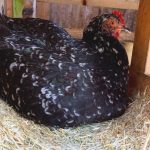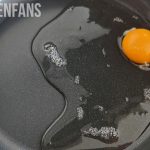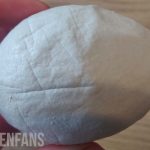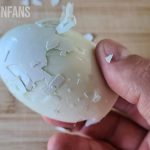Purple Chicken Eggs
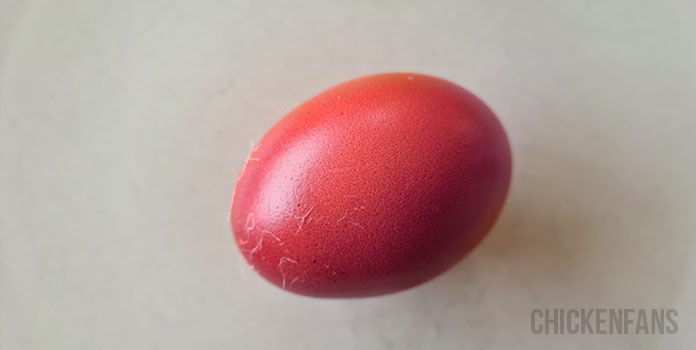
Nothing more exciting than finding a purple egg in the nesting box. But how does the egg get its purple color, and what breeds can produce such beauties?
- What chickens lay purple eggs?
- How do chicken eggs get purple?
- Pink Chicken Eggs
- Plum-colored Chicken Eggs
- Wet vs. Dry Bloom in Purple Chicken Eggs
- Purple Egg Science and Genetics
- What can I feed chickens to get purple eggs?
- External Factors affecting the Purple Egg Shade
- Summary
What chickens lay purple eggs?
Croad Langshans, Favorelles, and Olive Eggers can produce eggs with a purple, pink, or plum-colored shine. The color results from reddish pigments in the bloom, the protective cover on the egg’s surface. These chicken breeds are genetically predisposed to produce pink blooms that turn the egg purple.
How do chicken eggs get purple?
The purple coloring of chicken eggs is a mix of fluorescent reddish pigments in the bloom and pigments in the eggshell. When the bloom covers a white egg, the result is rather pink. When the eggshell is brown or green, the result is rather purple.
The bloom or cuticle is a protective cover on the eggshell’s surface. It prevents bacteria from entering the egg. The bloom itself is soaked into the pores of the eggshell. When the bloom has red pigments, the color is mixed with the eggshell color, which results in a purple coating when the bloom dries.
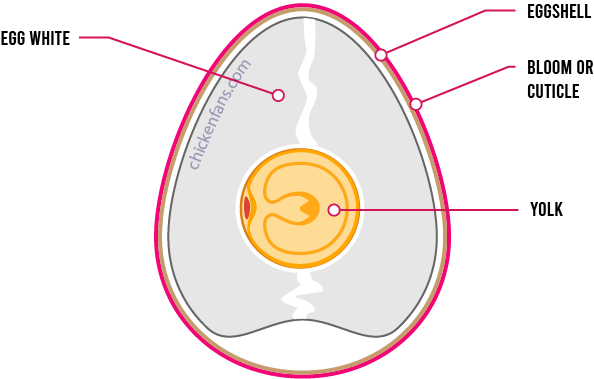
The amount of fluorescent reddish pigments in the bloom is genetically coded. The strength of the fluorescence or red and pink in the bloom varies and depends on the breed.
Pink Chicken Eggs
When a reddish bloom covers a white or light brown egg, it creates a pinkish shine. This can be seen when Faverolles or Easter Eggers lay eggs with a very light eggshell color. The base off-white shell color mixes with the reddish bloom and turns the egg pastel pink.
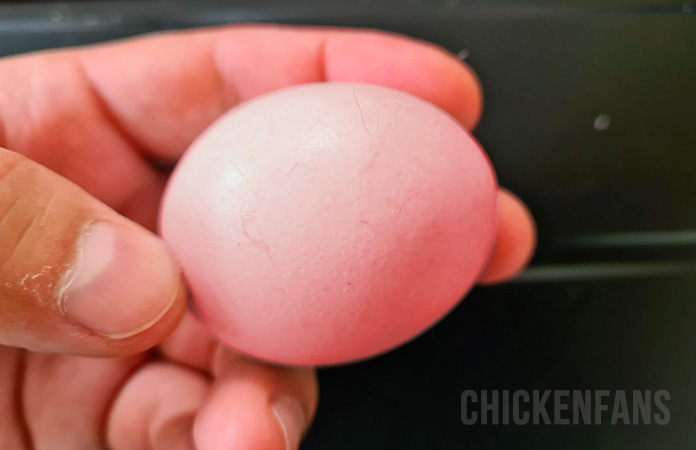
Plum-colored Chicken Eggs
When a reddish bloom covers a brown, green, or olive egg, it creates a plum-colored hue. Croad Lansghan chickens are famous for laying plum-colored eggs. The base dark shell color mixes with the reddish bloom and turns the egg plum.
The base eggshell color of Olive Eggers consists of two pigments, a brown pigment, protoporphyrin, and a blue pigment, biliverdin. The combination of blue and brown produces the natural olive green eggshell base color.
The plum color results from the pigmentation of brown to greenish colors combined with fluorescences of red to pink in the cuticle.
Wet vs. Dry Bloom in Purple Chicken Eggs
When the bloom covering an egg is still wet, you see the natural eggshell color coming through. If you have a lavender egg with a light brown base color, it will turn brown if you wet it. The purple color fades if you wash the bloom of the eggs altogether.
An eggshell consists of calcium carbonate crystals with thousands of tiny pores. When the bloom dries, the fluorescent reddish pigments are soaked into the pores of the eggshell.
When the bloom dries, the pastel coating on the egg shows, giving it a purple or pink look.
Purple Chicken Egg Science and Genetics
Whether a chicken lays purple eggs is almost entirely controlled by genetics.
The final color is a result of:
- genes controlling the eggshell color and pigmentation
- genes controlling the bloom pigmentation
The color of the eggshell is determined by brown protoporphyrin pigments, derived from hemoglobin in the blood, and blue-green biliverdin pigments, derived from bile. The blue in the eggs is regulated on the O-locus on chromosome pair 1. We discuss these genes in detail in our egg color genetics article.
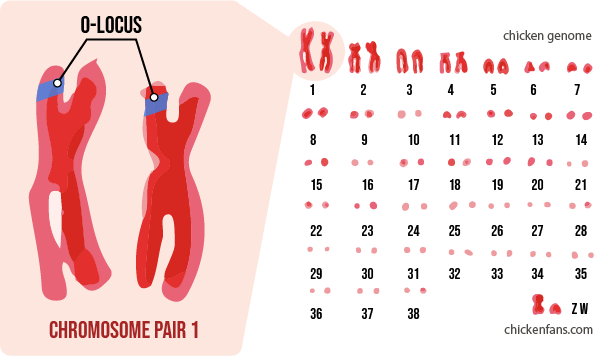
The precise genetic coding of the purple color in the bloom is still unknown. In 2018, researchers revealed that the bloom’s color and quality strongly relate to the eggshell’s pigments and quality.
The brownish egg-coloring porphyrin pigments also contribute to the color of the bloom. The interplay with pigments on the shell results in a light spectrum with short violet wavelengths, producing a purple appearance.
What Can I Feed Chickens to Get Purple Eggs?
The purple color results from the bloom’s color, which is defined by genetics. There is no way to turn ordinary egg layers into purple egg layers.
If you have a chicken that’s already laying pink or lavender eggs, its diet and feed intake can be of some influence on the pigmentation:
- Medications like Nicarbazin can affect the pigmentation of the eggshell and bloom
- Vitamin D3 and Manganese deficiencies can influence the eggshell formation and result in lower-quality shelled eggs
Extra calcium in the chicken feed does not affect the purple color much, as the bloom lays on top of the eggshell.
External Factors Affecting the Purple Egg Shade
The shade of purple that you get on the egg will change:
- when the base color of the eggshell changes
- when the composition of the bloom changes
These external factors affect the shade of pink or purple on the eggs:
- Age and Season: when chickens approach the end of their laying, the eggshell color is affected. Also, when they are laying their biggest eggs, there is less pigment for the entire egg, so the base color will be lighter, and the egg will get pinkish.
- Light: sunlight provides chickens with vitamin D3, vital for eggshell formation. When days are prolonged with artificial light, the eggs tend to be lighter colored. The eggs will shift towards a lighter pink look rather than deep purple.
- Medical conditions: some diseases like Infectious Bronchitis are known to disrupt eggshell mineralization and colorization and will shift the color in the violet spectrum.
- Food and medication: some medications like Nicarbazin, used to fight coccidiosis, affect eggshell pigmentation. A lack of micronutrients and minerals like manganese can also influence eggshell formation.
- Stress: stress disturbs the egg-laying process in the reproductive system and causes eggshell abnormalities. Early laying can cause the purple bloom to disappear or result in less pigmented pink eggs.
Summary
There are no chickens that lay true, natural purple or pink eggs. However, some breeds have fluorescent, reddish pigments in the bloom that render the eggshell purple.
The result tends to be rather pink when the underlying shell is white or light brown. The end result is purple or plum-colored when the base color is darker, olive, or green.
Croad Langshan, Favorelles, and Olive Eggers are known to lay purple-looking eggs.
Further Reads
- Chicken Egg Color Genetics – an in-depth study on how genes control different egg colors
- Chicken Egg Color Chart – an overview of all chicken egg colors per breed
- 10 Popular Chicken Breeds With Colored Eggs – an overview of great egg-layers with colored eggs
- Black Chicken eggs – busting some persistent myths about black eggs
- Green Egg Yolks – why do egg yolks turn green when they are hard boiled
- Chicken Egg Anatomy – overview of the anatomy of a chicken egg
- Chicken Genetics – an overview of chicken genetics and coloring
- Chicken Egg Anatomy – overview of the anatomy of a chicken egg
- Chicken Reproductive System – an overview of egg and eggshell formation
